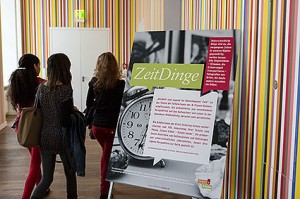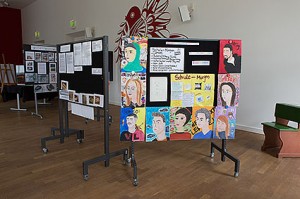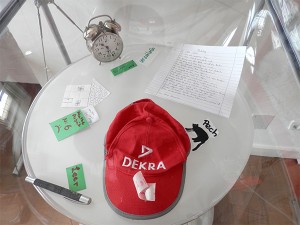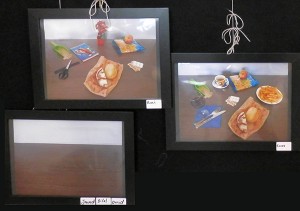Stories from the Student Exhibition “TimeThings”
Some may ask themselves why, from May 29 to June 1 at the Jewish Museum Berlin, there was a little exhibition of students’ work that had nothing to do with ‘Jewish subjects.’ I would like to answer this question: since last summer, we have been working with three Berlin schools to reinforce positive ways to handle ‘diversity‘ as well as cultural heterogeneity. We advocate creative forms of work that offer the possibility for individual development. That is why we gave the schools an opportunity to conceive with their students of an exhibition that would actually be shown in the museum. As an open-ended, overarching theme we chose ‘Time,’ in order to leave the participants with a lot of latitude.
As the project leader I was only seldom directly involved in the implementation. I was thus surprised and impressed by the diversity of themes and objects on display. Two pieces struck me in particular and I would like to share their stories:
In a workshop on showcase design, the students learned about how to tell a story with objects. A group of students – only boys – from the Ernst Schering School was supposed to bring objects that had something to do with the subject ‘school.’
They presented an ink eraser, a baseball cap, and a mobile phone. I understood the ink eraser’s connection to daily life at school. But what the latter two objects had to do with school I had yet to learn: it turned out they were things that you had better not be found with or have on. One of the students then replaced the phone with something he chose from our case of objects, an alarm clock. Now a team of three had to invent a story that would feature all three things. We were surprised by the dramatic tale they soon presented us with: one of the boys turned the mobile phone on and used it to play somber instrumental music. In a dark monotone voice he uttered the following story: “It is the 5th of May, 1995. Cihad overslept. He didn’t hear his alarm clock. He runs to school. They are taking a math test. He makes mistakes and wants to correct them, but his ink eraser is empty. Then someone steals his cap.”
For the exhibition, the boys developed the story further, adding more objects and symbolic ersatz sketches. From the minimalist improvised story an elaborate poem emerged. Texts and objects found their place in a showcase. I find this bad-luck day at school the most amusing exhibit of the show.
On the other hand there is a photograph, shot by a student at the B. Traven High School, that I find sad. He has been in Germany for four months and at the school for three. The students of the so-called ‘welcome class’ photographed objects from their surroundings. The idea was to answer the question “Where do you live?” with pictures. In nearly all the pictures are objects – a plate of fries, a shovel with sand, pills, scissors, a comb, arranged variously on a muddy-brown table. Hardly any other objects appeared in these pictures. I thought to myself, in this street there must be a diner, a pharmacy, a playground, a hairdresser, and not much more. But one picture just showed a bare tabletop, nothing else. By chance, one of the boys who had taken this picture was standing next to me with a group of other students at the show’s opening on Wednesday. They were taking pictures with their cell phones of the photographs on the wall. I spoke to him and asked: “Why is there nothing else in that picture?” He looked at me and said: “There is nothing there. I have to walk for ten minutes before I reach a store. We live in a shelter.”
These are two examples of what can transpire, when students come to the museum in order to create an exhibition. The stories that their exhibits tell are so various that one cannot summarize them without ironing out their distinctiveness. In any case, though, the Jewish Museum’s motto applies well to this exhibition project: “Not what you expect.”
Rosa Fava, Project Leader, “Diversity in Schools”



